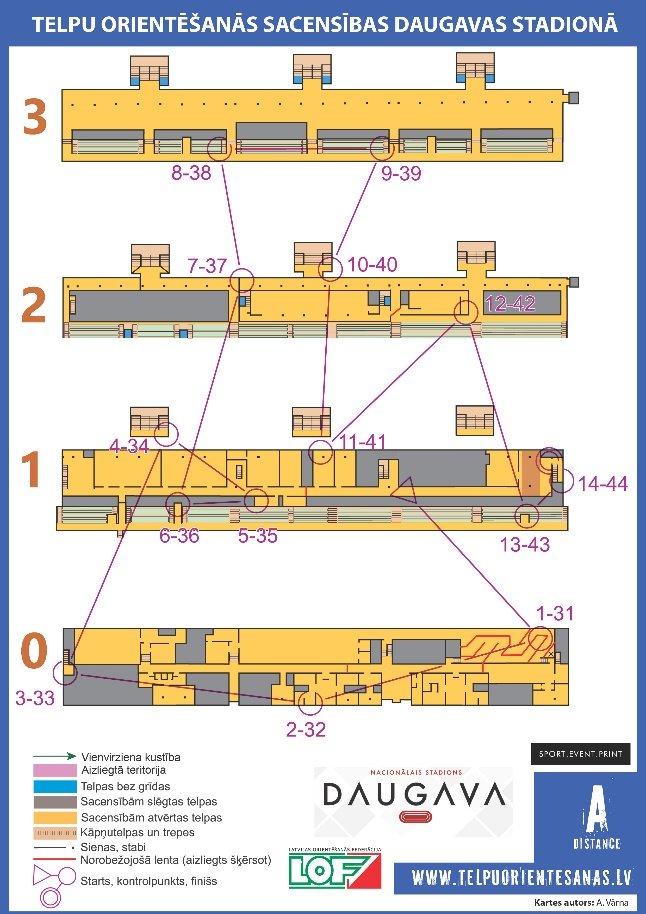With the continued growth in urban sprint orienteering, both as a competitive sport and as spectator entertainment, it is not surprising that sprint orienteers have been exploring other ways to enjoy ‘fast and furious’ navigation. In addition, in northern regions of the orienteering world, where the winters can be long and dark, and footing on the roads and walkways treacherous for runners, the idea of orienteering indoors has a certain appeal. One development has been the introduction of Indoor Orienteering.
If you have ever managed to get lost in an unfamiliar multi-level department store, you can probably imagine how challenging it would be to navigate a course at speed within such a building. Especially when control points can be located not only within the two-dimensional space of one floor, but can also switch floors! The resulting three-dimensional puzzle takes route-choice decisions to a whole new level. If the floor layout is too simple in some parts of a building to be interesting, specific route-choice options (e.g. an elevator or stairwell) can be temporarily blocked off, to increase the navigational difficulty.

Here is an Indoor O course set recently in a four-story building in Latvia, at the World Masters Orienteering Championships. While this indoor O offering was not a ‘medals’ WMOC event, it was still very popular with WMOC competitors. Note that each floor of the building is mapped separately, but course legs often change floors between controls; for example, the Start was located on Floor 1, while the first control was located on Floor 0.
The GVOC club held a really fun indoor O training event in Burnaby one evening this winter, using the corridors and stairwells of Simon Fraser University’s notoriously complicated central building complex. The map below shows one part of that very challenging course. The event organizer (Sergio Fernandez) not only set the courses, he also made the map. Control points in this event were marked by coloured Post-it tags, just stuck on the wall. Only publicly accessible rooms were used, so aside from hallway and
stairwell doors, no doors had to be opened. Since no classes were underway, the buildings were not crowded and it was possible to make good speed ….. if you could keep track of yourself on the map!

Some Scandinavian and UK indoor O events have been able to use delightfully complex buildings, both old and new. Department stores and large schools are favourite locations – the biggest challenge, perhaps, is getting permission from building managers to allow a crowd of strangers to run very fast in the interior of their property! It undoubtedly helps to have a contact on the “inside” who loves orienteering, and knows how to pitch the idea to their superiors.
Look around your town; maybe you can find a candidate building or two!
 Orienteering BC
Orienteering BC